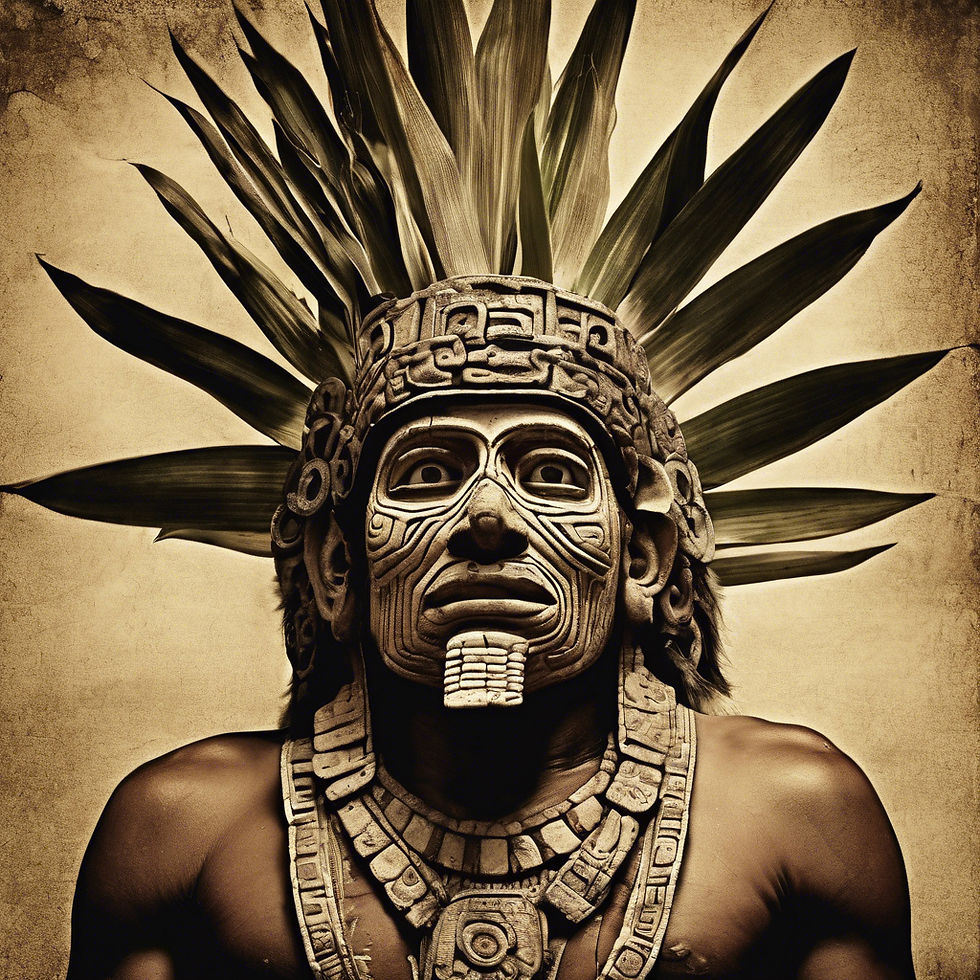The Mysteries Surrounding Centeotl the Aztec God of Maize
- Scarly

- May 27
- 3 min read
Centeotl, the Aztec god of maize, is a vital figure in Aztec mythology and culture. Revered in an agricultural society that relied heavily on maize, he symbolizes abundance, fertility, and the essence of life. However, many aspects of Centeotl's story remain enigmatic, captivating scholars and enthusiasts alike. This post explores his mythology, worship practices, representation in art, and the relevance he holds in today's discussions on indigenous cultures and agriculture.
The Significance of Maize in Aztec Life
Maize was far more than food for the Aztecs; it was sacred and represented a gift from the gods. This crop formed the foundation of their diet, appearing in essential dishes like tortillas and tamales. In fact, studies indicate that maize constituted about 80% of the Aztecs' caloric intake.
Religious practices centered around maize included elaborate offerings that showcased its importance. For example, during the Tlacaxipehualiztli festival, the Aztecs would present maize in various forms, thanking the gods for the life-sustaining properties of the crop. This reverence underscored their profound connection to nature and the divine, reinforcing community bonds through shared rituals.

Centeotl: The God of Maize
Centeotl rose to prominence as the patron deity of maize during the peak of the Aztec civilization. His dual representation—embodying both the young and mature stages of maize—captures the lifecycle of the plant, from sprouting seeds to golden grain.
Often portrayed as a youthful figure wearing vibrant maize headdresses, Centeotl symbolizes renewal and fertility. His association with agriculture was crucial; he was believed to secure the health of crops during planting seasons. For instance, during the annual planting festival, Aztecs would engage in rituals to invoke Centeotl's blessings, ensuring that their fields would thrive.
Iconography and Symbolism
Centeotl's iconography is rich, often showcasing elements linked to maize crops. He is frequently depicted with a headdress made of maize cobs and donned in green robes symbolizing vibrant fields. His tools, which include planting sticks, highlight his role as the protector of agriculture.
Artistic representations of Centeotl across various codices illustrate his significant influence. For example, the Codex Mendoza features detailed images of Centeotl, emphasizing his connection to the earth and agricultural abundance.

Festivals and Rituals
Centeotl played a central role in Aztec agrarian festivities. The Festival of Maize, held in the spring, saw communities unite in prayer and sacrifice, hoping for a bountiful harvest.
These vibrant celebrations included music, dance, and communal feasting. In 1519, Spanish chronicler Bernal Díaz del Castillo noted that during one such festival, thousands gathered in tribute to Centeotl, reinforcing not only their agricultural practices but also their cultural identity.
Legacy and Modern Relevance
Centeotl's influence and the importance of maize persist today. As agricultural practices evolve, discussions surrounding food sovereignty and indigenous rights frequently reference Centeotl as a symbol of resilience.
For instance, recent studies indicate that agroecological practices inspired by indigenous methods can enhance crop yields by up to 30%. Activists draw upon Centeotl's legacy, advocating for sustainable farming methods that honor traditional knowledge and the environment.

Cultural Integration of Centeotl
Interest in weaving indigenous beliefs into contemporary environmental movements is growing, with Centeotl providing vital insights. Current ecological crises highlight the lessons that ancient deities like Centeotl offer on maintaining harmonious relationships with nature.
Through the lens of ethnobotany, we can uncover the wisdom behind traditional farming practices that enhance crop biodiversity and sustainability. For example, indigenous communities often rotate crops and employ companion planting, techniques that not only yield better harvests but also preserve ecological balance.
Closing Thoughts on Centeotl
The mysteries surrounding Centeotl, the Aztec god of maize, reflect broader themes of life, sustenance, and cultural identity that resonate today. His symbolism moves beyond mere mythology, offering a nuanced understanding of humanity's connection with nature.
Exploring Centeotl's significance reveals how integral maize has been in nourishing communities, shaping histories, and influencing futures. By honoring such traditions and their deities, modern societies can cultivate a deeper appreciation for the intricate web of life and the importance of preserving agricultural heritage in our changing world.
Celebrating Centeotl encourages us to appreciate our roots—both literally and figuratively—as we strive towards a sustainable future built on respect for our environment and cultural histories.


Comments